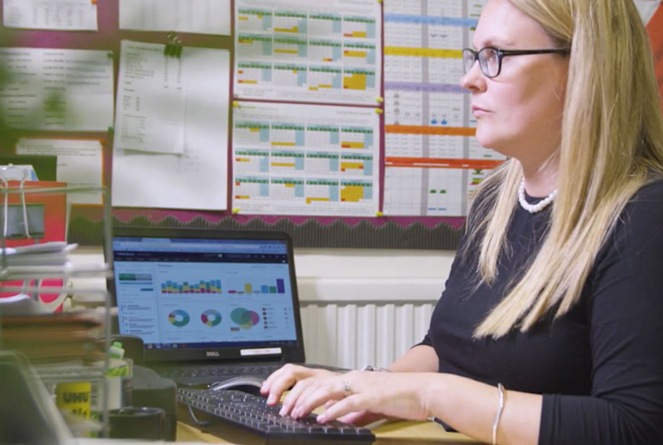Introduction
Parental leave in schools is evolving, and Shared Parental Leave (SPL) is increasingly significant. It's essential for schools to understand the nuances of SPL to support their staff effectively. In this blog post, we address what SPL is, its importance in schools and common questions asked to provide clarity on this crucial aspect of employee benefits.
What is shared parental leave?
Shared parental leave is a progressive and inclusive approach to parenting that allows both parents to share the responsibilities of caring for a new child. Unlike traditional maternity or paternity leave models, shared parental leave recognises that parenting is a joint effort and encourages a more balanced distribution of caregiving duties. This policy enables parents to decide how they want to divide their time off during the crucial early months of their child's life. It empowers families to make choices that suit their needs, creating a supportive environment for parents to bond with their children and actively participate in their upbringing. Shared parental leave not only promotes gender equality by challenging traditional gender roles but also recognises the importance of involving both parents in the early stages of a child's development, ultimately contributing to the entire family's well-being.
The importance of shared parental leave in schools
The importance of shared parental leave in schools extends beyond the immediate family dynamics, influencing the broader educational environment positively. Managing shared parental leave in schools correctly can help create a culture of equality and inclusivity. When educators are supported in taking time off to care for their newborns, it sends a powerful message that parenting responsibilities are shared, challenging traditional stereotypes. Incorporating shared parental leave in schools reflects a commitment to creating a nurturing and equitable learning environment for pupils, teachers, and the entire school community.
Frequently asked questions
As education HR experts, our role involves comprehensive support for schools in navigating various HR-related matters, which includes managing parental leave. We guide schools through the intricacies of parenthood in education, addressing concerns and offering solutions to streamline the process for both educators and administrators.
Below, we've compiled a list of some of the frequently asked questions we have received from our school customers surrounding shared parental leave, aiming to address common queries and provide valuable insights into this progressive and evolving aspect of HR management in the education sector.
1. Do we have to pay a member of staff 10 weeks’ full pay during SPL? How about the maternity cover teacher?
Yes, paying SPL is a requirement for your staff member. If maternity cover is needed, it is a practical necessity for the school.
2. Can the same person start SPL if the employee returns from Maternity leave before the summer holidays?
Absolutely. Once maternity leave concludes, either parent can choose to take SPL at their preferred time.
3. Can KIT days be taken during SPL?
KIT days are exclusive to maternity leave. However, during SPL, a combined total of 20 SPLIT days can be taken by either parent.
4. Can schools claim for SPLs as we do for maternity leave?
Claiming for pay during SPL is a payroll-specific process, similar to maternity pay.
5. How would holiday pay be handled if the staff member decides not to return?
If the staff member received contractual Maternity pay, it can be claimed back following the standard process. A final pay calculation would determine outstanding holiday pay for support staff.
6. Should an employee discuss SPL with the Head Teacher before making a request?
There is no strict rule. Providing factual information about the SPL process and required forms is recommended, but suggesting dates is not.
7. Do we have to check eligibility for a teacher with a freelance partner?
Eligibility is determined by the staff member and their partner using the government's online calculator.
8. How do we know the partner is eligible unless they tell us?
The staff member will provide eligibility confirmation on their NEIT form.
9. What if one partner becomes ineligible midway through the process?
Eligibility is based on earnings and employment period before the child's birth. Once met, they remain eligible for SPL.
10. Can a staff member take SPL after their 2 weeks' paternity leave, and does the mother need to end her maternity leave?
Not necessarily. The birth mother can give binding notice of taking SPL, setting the deduction from the Maternity allowance. The partner can then use SPL and Shared Parental Pay (SPP) if applicable.
Summary
Understanding the intricacies of Shared Parental Leave is crucial for schools to navigate these scenarios effectively. Providing the right support and information ensures a smooth process for both staff and the school, contributing to a positive working environment.
The education partner you can trust
Are you ready to confidently navigate the complexities of shared parental leave in schools?
Juniper is the education HR partner you can rely on to support all of your HR needs, including managing parental leave.
Book a free consultation with our dedicated HR team and see how we can help your school today!


/Primary%20school%20.jpg?width=2000&name=Primary%20school%20.jpg)








.png?width=940&height=788&name=Lingfield%20College%20Case%20Study%20(5).png)
-1.png?width=1000&height=833&name=National%20Association%20of%20Head%20Teachers%20(3)-1.png)
-3.png?width=1080&height=1080&name=Untitled%20design%20(10)-3.png)






